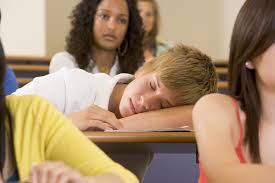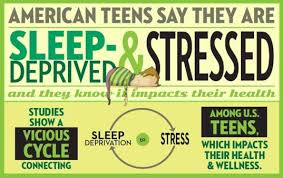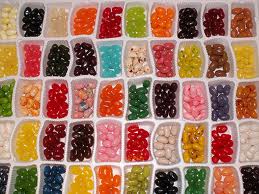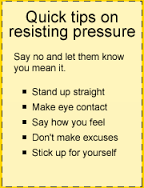- Other People — Teenagers see lots of people using various substances. They see their parents and other adults drinking alcohol, smoking, and, sometimes, abusing other substances. Also, the teen social scene often revolves around drinking and smoking pot. Sometimes friends urge one another to try a drink or smoke something, but it’s just as common for teens to start using a substance because it’s readily available and they see all their friends enjoying it. In their minds, they see drug use as a part of the normal teenage experience.
- Popular Media — Forty-seven percent of teens agreed that movies and TV shows make drugs seem like an OK thing to do, according to a 2011 study. Not surprisingly, 12- to 17-year-olds who viewed three or more “R” rated movies per month were seven times more likely to smoke cigarettes, six times more likely to use marijuana, and five times more likely to drink alcohol, compared to those who hadn’t watched “R” rated films (Amy Khan 2005).
- Escape and Self-Medication — When teens are unhappy and can’t find a healthy outlet for their frustration or a trusted confidant, they may turn to chemicals for solace. Depending on what substance they’re using, they may feel blissfully oblivious, wonderfully happy, or energized and confident. The often rough teenage years can take an emotional toll on children, sometimes even causing depression, so when teens are given a chance to take something to make them feel better, many can’t resist.
- Boredom — Teens who can’t tolerate being alone, have trouble keeping themselves occupied, or crave excitement
 are prime candidates for substance abuse. Not only do alcohol and marijuana give them something to do, but those substances help fill the internal void they feel. Further, they provide a common ground for interacting with like-minded teens, a way to instantly bond with a group of kids.
are prime candidates for substance abuse. Not only do alcohol and marijuana give them something to do, but those substances help fill the internal void they feel. Further, they provide a common ground for interacting with like-minded teens, a way to instantly bond with a group of kids. - Rebellion — Different rebellious teens choose different substances to use based on their personalities. Alcohol is the drug of choice for the angry teenager because it frees him to behave aggressively. Methamphetamine, or meth, also encourage aggressive, violent behavior, and can be far more dangerous and potent than alcohol. Marijuana, on the other hand, often seems to reduce aggression and is more of an avoidance drug. LSD and hallucinogens are also escape drugs, often used by young people who feel misunderstood and may long to escape to a more idealistic, kind world. Smoking cigarettes can be a form of rebellion to flaunt their independence and make their parents angry. The reasons for teenage drug-use are as complex as teenagers themselves.
- Instant Gratification — Drugs and alcohol work quickly. The initial effects feel really good. Teenagers turn to drug use because they see it as a short-term shortcut to happiness.
- Lack of Confidence — Many shy teenagers who lack confidence report that they’ll do things under the influence of alcohol or drugs that they might not otherwise. This is part of the appeal of drugs and alcohol even for relatively self-confident teens; you have the courage to dance if you’re a bad dancer, or sing at the top of your lungs even if you have a terrible voice, or kiss the girl you’re attracted to. And alcohol and other drugs tend not only to loosen your inhibitions but to alleviate social anxiety. Not only do you have something in common with the other people around you, but there’s the mentality that if you do anything or say anything stupid, everyone will just think you had too many drinks or smoked too much weed.
- Misinformation — Perhaps the most avoidable cause of substance abuse is inaccurate information about drugs and alcohol. Nearly every teenager has friends who claim to be experts on various recreational substances, and they’re happy to assure her that the risks are minimal. Educate your teenager about drug use, so they get the real facts about the dangers of drug use.
Please note that information from the book has been edited for length.


 arindambanerjee/
arindambanerjee/



